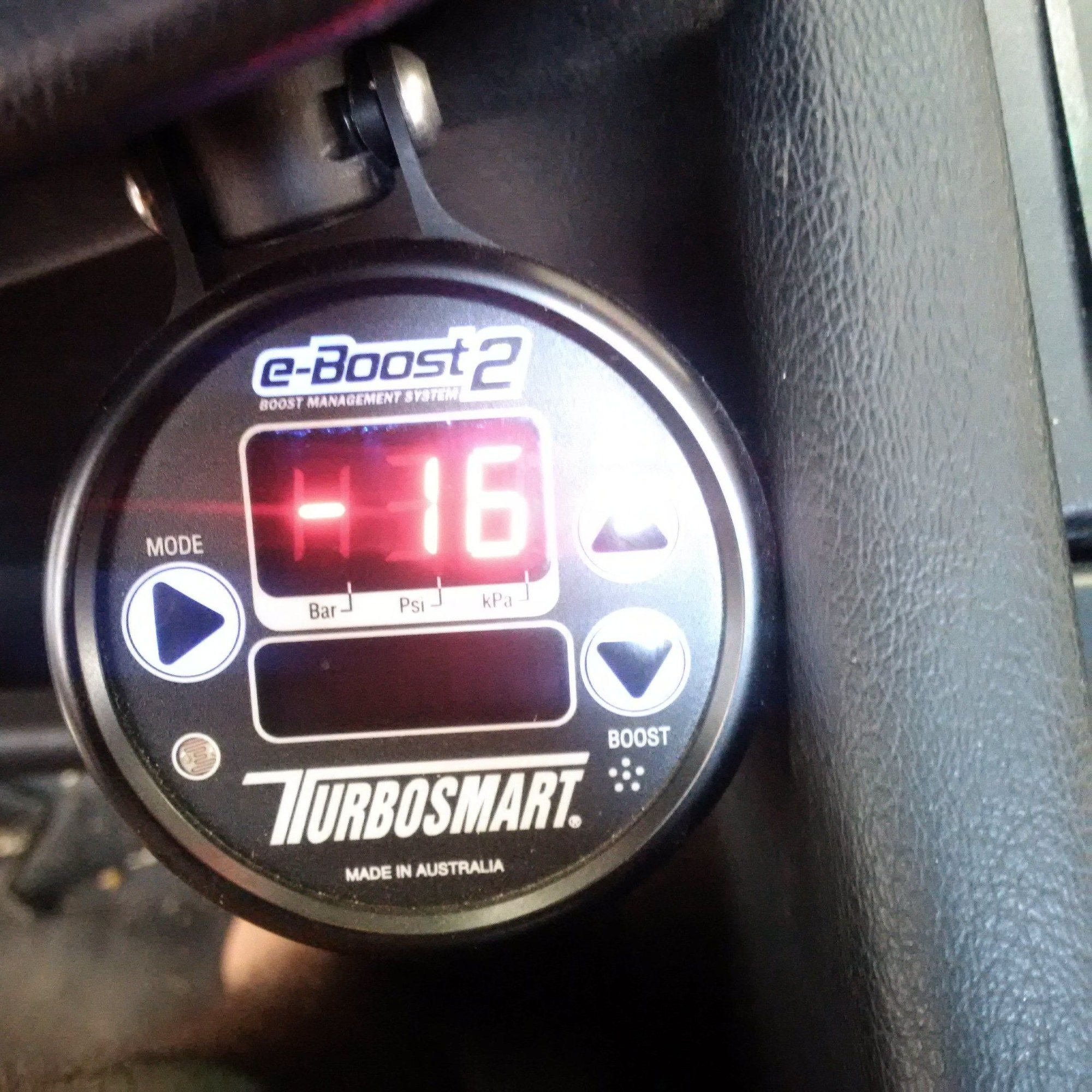Twin Turbo 928 fixed and back out there terrorizing the streets!
#2191
Nordschleife Master
Thread Starter
I’m thinking that “they” should run the brake booster Venturi jet pump in the compressor bypass valve circuit. When the throttle closes, the boost is diverted to compressor inlet. There’s a lot of flow and/or pressure differential to pull a big vacuum, and it’s precisely at the time when needed for maximum braking.
#2193
Nordschleife Master
Thread Starter
John is stress testing the system now by giving it stupid amounts of boost with somewhat retarded timing. This allows him to run high boost and see what breaks.
#2194
Nordschleife Master
Thread Starter
Ok, here are the symptoms after something broke.
At idle, compared to healthy runs:
- Idle slightly high
- Less intake manifold vacuum at idle
At full power, compared to healthy runs:
- Lower boost in the intake manifold
- Lower wastegate duty cycle
- Higher turbocharger speed
- Higher exhaust manifold pressure
- Leaner AFR
- MAF signal indicating slightly more power being produced per kg/h of air mass flow
What broke? John figured it out, but I'd like to hear your guesses.
At idle, compared to healthy runs:
- Idle slightly high
- Less intake manifold vacuum at idle
At full power, compared to healthy runs:
- Lower boost in the intake manifold
- Lower wastegate duty cycle
- Higher turbocharger speed
- Higher exhaust manifold pressure
- Leaner AFR
- MAF signal indicating slightly more power being produced per kg/h of air mass flow
What broke? John figured it out, but I'd like to hear your guesses.
#2196
Nordschleife Master
Thread Starter
#2198
Nordschleife Master
Thread Starter
#2202
Nordschleife Master
Thread Starter
In any case, John figured it out and here's the story. The intake manifold signal vacuum/boost line connector broke, from old age as much as anything. The signal vacuum/boost line open creates a large enough air leak on its own to reduce the idle vacuum and increase idle speed. This signal vacuum/boost line being open isn't enough to impact boost directly, though. However, the bypass valve operation uses this signal vacuum/boost to determine when the throttle is closed to open the bypass valves. At high boost, the pressure differential is large enough that the bypass valves open, which explains the large boost leak as the bypass valve circuit is designed to flow a lot of air. Since the bypass valve circuit operates upstream of the MAF, this itself didn't cause the MAF signal to be misleading and thus didn't impact the AFR. So why did it lean the mixture under boost? The signal vacuum/boost line also references the fuel pressure regulator to keep the fuel-rail pressure minus intake-port pressure constant. The broken vacuum/boost signal told the FPR that intake port has ambient pressure, and therefore produced a too low fuel pressure, which explains the slight leaning out of the AFR.
Sherlock Holmes story.
Car's back running and tomorrow it'll see yet higher boost levels and maybe even some rpms.
The vacuum has been restored!

Last edited by ptuomov; 09-28-2019 at 09:37 AM.
#2203
FWIW vacuum leaks are a recurrent issue on 944 turbos. I had the hose to the FPR pop out once as it is originally not secured. I added small nylon straps to every connection. Originally the system uses 3 or 4 way rubber connectors, which are also not secured, with hard plastic lines, but I imagine that just like most 951 folks do you have replaced these old and brittle lines with silicon lines. I remember from the S4 I worked on a very similar set up with old and fragile plastic lines.
Are you really pushing the boost in view to break something? It seems to me the car may be borderline undrivable already with the latest figures measured, and perhaps it would be a little sad to have it definitely undrivable with a couple of broken cylinders?
Are you really pushing the boost in view to break something? It seems to me the car may be borderline undrivable already with the latest figures measured, and perhaps it would be a little sad to have it definitely undrivable with a couple of broken cylinders?
#2204
Nordschleife Master
Thread Starter
FWIW vacuum leaks are a recurrent issue on 944 turbos. I had the hose to the FPR pop out once as it is originally not secured. I added small nylon straps to every connection. Originally the system uses 3 or 4 way rubber connectors, which are also not secured, with hard plastic lines, but I imagine that just like most 951 folks do you have replaced these old and brittle lines with silicon lines. I remember from the S4 I worked on a very similar set up with old and fragile plastic lines.
It's actually hard to find flexible lines that can tolerate both E10 and engine oil. For example, try finding flexible thin wall crankcase breather hose that can handle both of them plus combustion products. The crankcase breather hoses that we use can deal with both, but that hose is pricey per foot. And I don't call things pricey lightly!

Because we're using stock bore size, stock open deck block without any filler or sleeves, modified stock pistons, stock wrist pins, stock PPF rods, Glyco stock-size rod bearings, modified stock S4 crankshaft, stock head gasket, and stock head bolts, I am not worried about breaking anything in the short block because of cylinder pressures! ;-) Engine speed, detonation, and pre-ignition are what could break the stock short-block components, but they can easily take a little bit of normal cylinder pressure. With aftermarket "performance" components, I'd be sweating it, though.
Last edited by ptuomov; 09-28-2019 at 10:00 AM.
The following users liked this post:
bertram928 (10-21-2019)



